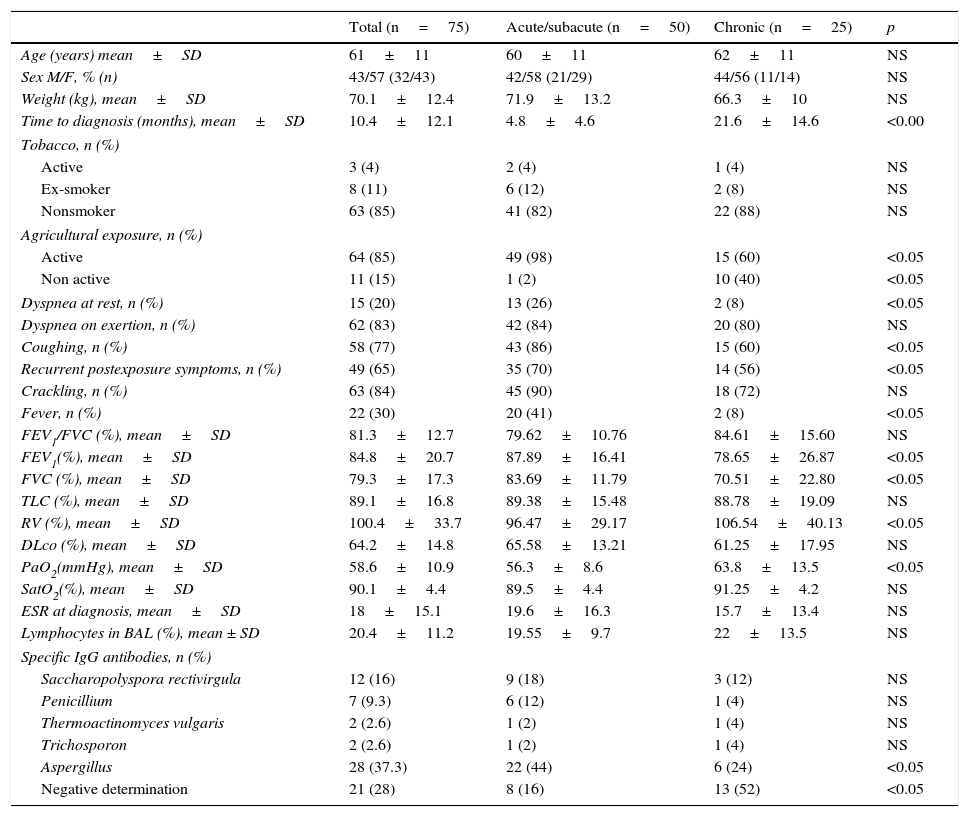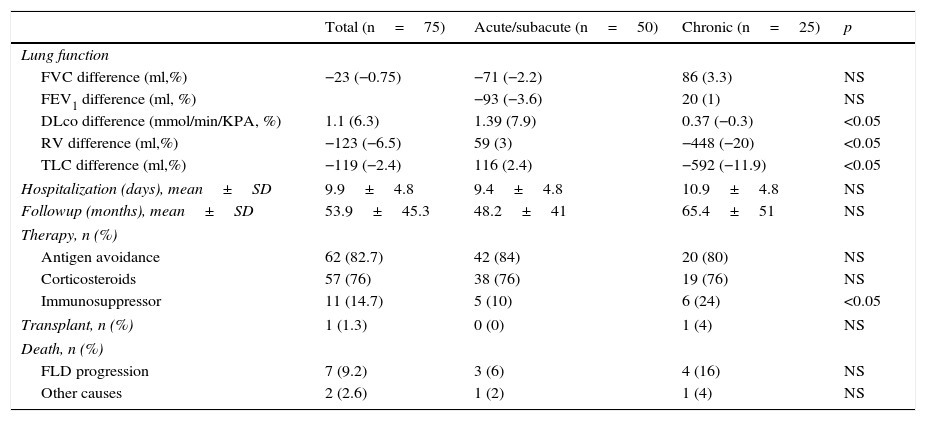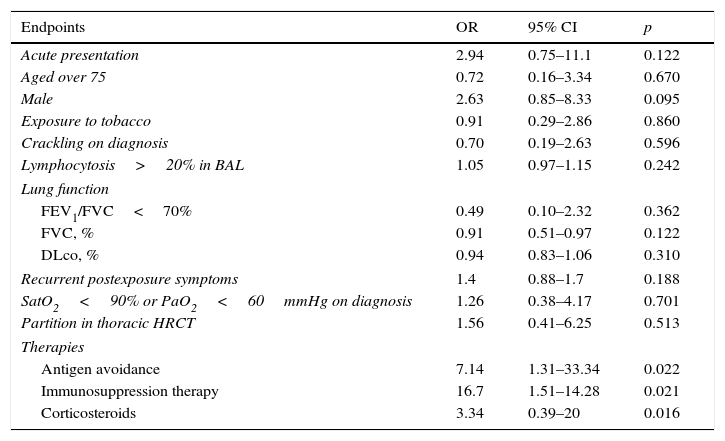Farmer's lung disease (FLD) is a common form of hypersensitivity pneumonitis possibly underdiagnosed in our midst. The aim of this study was to describe clinical characteristics, evolution and factors that influence the prognosis of patients with FLD.
Patients and methodsA retrospective study that included all patients diagnosed with FLD presenting an environmental exposure risk, a clinic, lung function and a compatible radiology, in which antigen sensitization was demonstrated and/or a concordant pathology.
ResultsWe selected 75 patients with FLD, 50 with acute or subacute form (ASF) and 25 with chronic form (CF). Forty-four percent of patients (n=33) were diagnosed during the months of March and April, especially those with ASF compared to CF (52 vs. 28%; p=0.0018). In the ASF group, DLco showed an improvement during follow-up (p=0.047). The determination of specific IgG antibodies was positive in 39 patients (78%) with ASF (44% of them against Aspergillus) and CF 12 (48%). The realization of antigenic avoidance (OR 9.26, 95% CI 1.3–66.7, p=0.026) and the administration of immunosuppressive therapy (OR 16.13, 95% CI 1.26–200, p=0.033) were predictors of better disease progression.
ConclusionsFLD is predominantly seasonal in our environment. CF usually has a negative specific IgG antibodies unlike ASF, where antibodies against Aspergillus are the most common. The realization of antigenic avoidance and immunosuppressive treatment are possible predictors of better disease progression.
La enfermedad del pulmón de granjero (EPG) es una forma frecuente de neumonitis por hipersensibilidad, posiblemente infradiagnosticada. El objetivo de este estudio es describir las características clínicas, la evolución y los factores que influyen en el pronóstico de los pacientes con EPG.
Pacientes y métodosEstudio retrospectivo que incluyó a todos los pacientes diagnosticados de EPG por haber presentado una exposición ambiental de riesgo, una clínica, una función pulmonar y una radiología compatible, en los que se demostró sensibilización antigénica y/o una anatomía patológica concordante.
ResultadosSe incluyeron 75 pacientes con EPG, 50 con forma aguda o subaguda (FAS) y 25 con forma crónica (FC). Un 44% de los pacientes (n=33) fue diagnosticado durante los meses de marzo y abril, especialmente aquellos con FAS en comparación con las FC (52 vs. 28%; p=0,0018). En las FAS la DLco presentó una mejoría durante el seguimiento (p=0,047). La determinación de anticuerpos IgG específicos fue positiva en 39 pacientes (78%) con FAS (44% de ellos frente a Aspergillus) y en 12 con FC (48%). La realización de la evitación antigénica (OR 9,26, IC 95% 1,3-66,7, p=0,026) y la administración de tratamiento inmunodepresor (OR 16,13, IC 95% 1,26-200, p=0,033) fueron los factores predictores de mejor evolución de la enfermedad.
ConclusionesLa EPG presenta un inicio con predominio estacional en nuestro medio. Las FC presentan habitualmente determinación de anticuerpos IgG específicos negativos, a diferencia de las FAS, donde los anticuerpos frente Aspergillus son las más frecuentes. La evitación antigénica y el tratamiento inmunodepresor son posibles predictores de mejor evolución de la enfermedad.












